Features
Some 1970s encounters in Magistrates Courts in Victoria
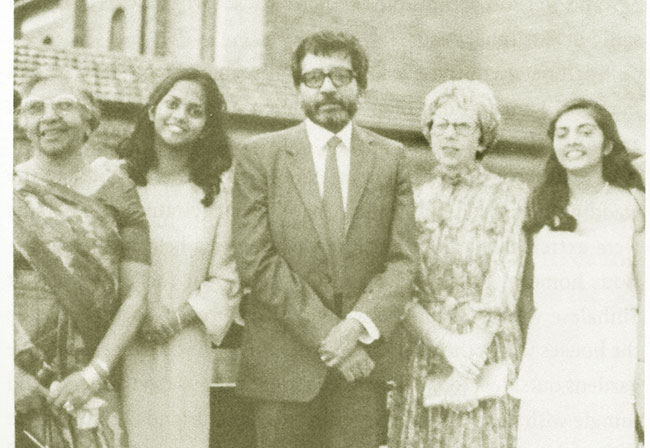
Excerpted from A Life In The Law by Nimal Wikramanayake
When I went to the Bar in 1972, I found appearing before the stipendiary magistrates and the justices of the peace extremely difficult because a number of them were bigoted, obstinate, obdurate and racist. Fortunately for me, there were a few judicious ones like Jack Maloney and Alec Vale. There were also a few of them who were kind and generous to me like Kevin O’Connor, Ernie Daniher and Ken Pummeroy. But the justices of the peace were in a class of their own.
They were layman and laywomen. The less I say about them the better. These men and women had no legal training and knew nothing about the law. They usually consisted of the butcher, the baker and the candlestick maker and, believe it or not, they were appointed to hear summary criminal cases.The sad part of it was that in my practice, I was not even paid danger money for appearing before these miscreants.
I remember very early in my career at the Victorian Bar appearing before the justices at the Broadmeadows Magistrates’ Court. It was in the middle of 1973 and I was able to demolish the prosecution case without any difficulty. I submitted to the justices of the peace that my client had no case to answer, as none of the ingredients of the offence had been established against him. I addressed the two wise men, referred to the burden of proof in criminal cases and the fact that the prosecution had to prove its case beyond reasonable doubt. I then cited a judgment of Mr Justice Menhennitt and asked the justices of the peace to apply the principles laid down by His Honour in the case I had just cited and acquit my client.
What happened next was, to say the least, absolutely startling. The presiding justice said: “We set aside the judgment of Mr Justice Menhennitt. However, since there are so many ifs and buts, we will give the accused a bond’
I stood there speechless, but as my client had been given a bond the result was satisfactory. There is a principle of law known as stare decisis under which a judge is bound to follow a decision of a superior court unless he or she can establish that the judgment of the superior court was clearly wrong. In this case, however, the justices were bound to follow the Supreme Court judge’s decision and had no right to question its correctness as they were a lowly, inferior court. Not only did they not follow His Honour’s decision – they set it aside. This is what we had to put up with. This was absolutely scandalous.
Madam de Farge sat daily in one of the Magistrates’ Court, and although she did not have knitting needles, she had a blue rinse in her hair and dispensed justice mercilessly. All of us young barristers dreaded the thought of appearing before her, for our clients were invariably found guilty.
All this was to change when Jim Kennan became Attorney-General early in the 1980s. With one stroke of the pen, he abolished the office of the stipendiary magistrate and removed the right of justices of the peace to sit and hear cases in the Magistrates’ Court. He replaced them with magistrates who were required to be qualified barristers and solicitors who had served an appropriate term of years.
It was a mystery to me as to why this peculiar system of administering justice was permitted to continue for over a hundred years in Victoria. Nearly all of the great lawyers in Victoria, and long before my time, had to serve an apprenticeship in the Magistrates’ Court and they had to endure the magistrates and justices of the peace, but they did nothing to have this dreadful system of administering justice replaced in Victoria. We will never see the likes of an Attorney-General like the late Jim Kennan in Victoria again.
By the middle of 1974 I had been at the Victorian Bar for nearly two years. I was now accustomed to the rough and tumble in the Magistrates’ Court which we young barristers called the “bear pit”.
I had been briefed by my friend Ronny de Kretser to appear for a Mr Chamarrette, a migrant like me, who had come out to Australia in the 1960s. Chamarrette had been a major in the Indian Army and was an extremely prim and proper gentleman, right up to his enormous, curved military moustache.He had been charged with driving over the speed limit of 60 km/h in Canterbury Road, Camberwell. Chamarrette was a ruddy-faced Anglo-Indian gentleman and his face got ruddier and ruddier as he explained the circumstances of his apprehension to me and related his story in my chambers.
He instructed me that he had been driving in an easterly direction along Mont Albert Road and turned right and drove in a southerly direction until he reached Canterbury Road. He then turned left and had driven about 100 metres when he heard a police siren and a police car drew up alongside him. The policeman beckoned him to pull up at the kerb. When he got out of his motor car, he enquired what he had done wrong. The constable informed him that he had been travelling over 60 km/h in a 60 km/h zone.
Chamarrette was livid. He told the constable that he could not have reached the speed of 60 km/h when he turned into Canterbury Road, as he had traveled less than 100 yards when he was apprehended. Anyway, the upshot of it was that I had a brief to appear at the Camberwell Magistrates’ Court for Chamarrette.
I arrived at the Camberwell Magistrates’ Court at 9.30 am and had a further short conference with Chamarrette. We then adjourned into the main court room where Mr Alec Vale, the magistrate, was sitting. A case had been called up and a police constable, Constable Malone, was giving evidence. The late Brian Bourke, the lion of the Criminal Bar, got up to cross-examine the witness. With a few short, sharp, pointed questions, Bourkie destroyed the credibility of the witness and the magistrate acquitted the accused.
Shortly thereafter my case was called up, and my heart sank. Alec Vale could not hear my case and it was sent before the justices of the peace. I went into a little room at the back of the court house where the two justices were sitting. My case was called and I marked my appearance. Lo and behold, the chief prosecution witness was Constable Malone, the same constable who had given evidence in Bourke’s case.
After he gave his evidence, I got up, looked him squarely in the eye and said, “Constable Malone, a short while ago you were cross-examined by Mr Brian Bourke in a case that was being heard before the magistrate, Mr Alec Vale” Constable Malone nodded. I then said, “Isn’t it a fact that Mr Brian Bourke demolished your evidence and the accused was acquitted?”
Constable Malone answered “yes” to this question. The presiding justice then interjected and said, “Mr Wikrama, are you attacking the credibility and the veracity of this witness?” I replied, “Yes”.
The justice of the peace then made a most astonishing statement: “Mr Wikrama, let us tell you here and now that as far as we are concerned, Constable Malone is a fair, just and an honourable man”
I was aghast. I replied, “What!”
The presiding justice then said, “Mr Wikrama, I don’t suppose you want us to hear this case’
I replied, “Certainly not, no way known”
The case was then adjourned for further hearing before the magistrate Alec Vale. I began putting my files in my attach case when the justice of the peace, Ridgeway, looked up at me and very patronisingly said, “Mr Wikrama, it is fairly obvious that you have arrived in this country recently.”
“Yes”. He then said, “Mr Wikrama, let me give you a piece of advice. In this country it does not pay to attack the police”
I was dumbfounded, for I was there for no other reason than to attack the police constable. I quickly collected my wits, opened my attache case and took my brief out, then in a loud stentorian tone said, “The justice of the peace informs me that in this country it does not pay to attack the police,” and wrote these words in large letters on my brief for the justice to seek. I then bowed and went before the magistrate. I was angry. It is one of the functions of a barrister doing criminal work to attack the police witnesses and to destroy their evidence.
When my case was called before the magistrate, Constable Malone again got into the witness box and gave his evidence in chief. I got up to cross-examine him. I called for his notebook and, to my surprise, noted that during the past two weeks he had taken up a position in Canterbury Road, a short distance east of where he had booked Chamarrette. He would arrive there at 5 o’clock and leave at 6.30 every evening. On every day in those two weeks, he had booked one person between 6.15 and 6.30 pm.
Using this useful bit of information, I proceeded to tear holes in Constable Malone’s evidence. I suggested to him that it was in his interest to book a number of speeding motorists every day, for it would enhance his prospects of promotion by showing that he was a diligent police constable. He denied this. I suggested to him that he would look good in the eyes of his superiors if he booked at least one person every day. He denied this.
He agreed with me that Canterbury Road was a busy road and he said that he would book a number of motorists speeding every evening. I then asked him to look at his notebook and tell me how many motorists he had booked every evening in the past two weeks. He grew a lighter shade of pale and remarked, “Only one”
And I responded, “And that was shortly before you returned to the station.” He agreed. After that he was putty in my hands.
Chamarrette then got into the witness box and, to say the least, was extremely impressive. He was a large man with an equally large military moustache. He stated that he had been in charge of a motor transport division to the British Army in a particular area in India during World War II and was more than familiar with speedometers and speed limits. When he concluded his evidence, the magistrate dismissed the charges against him, and I returned to my chambers.
Features
US foreign policy-making enters critical phase as fascist threat heightens globally
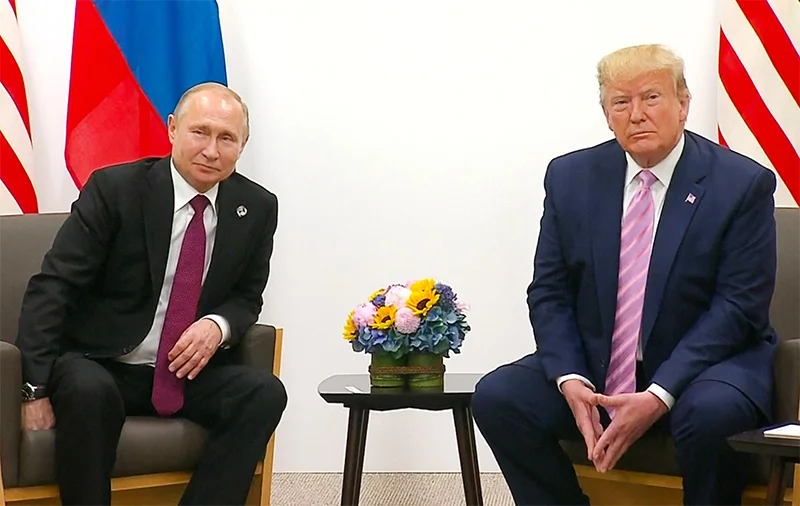
 It could be quite premature to claim that the US has closed ranks completely with the world’s foremost fascist states: Russia, China and North Korea. But there is no denying that the US is breaking with tradition and perceiving commonality of policy orientation with the mentioned authoritarian states of the East rather than with Europe and its major democracies at present.
It could be quite premature to claim that the US has closed ranks completely with the world’s foremost fascist states: Russia, China and North Korea. But there is no denying that the US is breaking with tradition and perceiving commonality of policy orientation with the mentioned authoritarian states of the East rather than with Europe and its major democracies at present.
Increasingly, it is seemingly becoming evident that the common characterization of the US as the ‘world’s mightiest democracy’, could be a gross misnomer. Moreover, the simple fact that the US is refraining from naming Russia as the aggressor in the Russia-Ukraine conflict and its refusal to perceive Ukraine’s sovereignty as having been violated by Russia, proves that US foreign policy is undergoing a substantive overhaul, as it were. In fact, one could not be faulted, given this backdrop, for seeing the US under President Donald Trump as compromising its democratic credentials very substantially.
Yet, it could be far too early to state that in the traditional East-West polarity in world politics, that the US is now squarely and conclusively with the Eastern camp that comprises in the main, China and Russia. At present, the US is adopting an arguably more nuanced approach to foreign policy formulation and the most recent UN Security Council resolution on Ukraine bears this out to a degree. For instance, the UN resolution in question reportedly ‘calls for a rapid end to the war without naming Russia as the aggressor.’
That is, the onus is being placed on only Ukraine to facilitate an end to the war, whereas Russia too has an obligation to do likewise. But it is plain that the US is reflecting an eagerness in such pronouncements to see an end to the Ukraine conflict. It is clearly not for a prolongation of the wasting war. It could be argued that a negotiated settlement is being given a try, despite current international polarizations.
However, the US could act constructively in the crisis by urging Russia as well to ensure an end to the conflict, now that there is some seemingly friendly rapport between Trump and Putin.
However, more fundamentally, if the US does not see Ukraine’s sovereignty as having been violated by Russia as a result of the latter’s invasion, we are having a situation wherein the fundamental tenets of International Law are going unrecognized by the US. That is, international disorder and lawlessness are being winked at by the US.
It follows that, right now, the US is in cahoots with those powers that are acting autocratically and arbitrarily in international politics rather than with the most democratically vibrant states of the West, although a facile lumping together of the US, Russia and China, is yet not possible.
It is primarily up to the US voting public to take clear cognizance of these developments, draw the necessary inferences and to act on them. Right now, nothing substantive could be done by the US voter to put things right, so to speak, since mid-term US elections are due only next year. But there is ample time for the voting public to put the correct perspective on these fast-breaking developments, internationally and domestically, and to put their vote to good use in upcoming polls and such like democratic exercises. They would be acting in the interest of democracy worldwide by doing so.
More specifically it is up to Donald Trump’s Republican voter base to see the damage that is being done by the present administration to the US’ standing as the ‘world’s mightiest democracy’. They need to bring pressure on Trump and his ‘inner cabinet’ to change course and restore the reputation of their country as the foremost democracy. In the absence of such action it is the US citizenry that would face the consequences of Trump’s policy indiscretions.
Meanwhile, the political Opposition in the US too needs to get its act together, so to speak, and pressure the Trump administration into doing what is needed to get the US back to the relevant policy track. Needless to say, the Democratic Party would need to lead from the front in these efforts.
While, in the foreign policy field the US under President Trump could be said to be acting with a degree of ambivalence and ambiguity currently, in the area of domestic policy it is making it all to plain that it intends to traverse a fascistic course. As has been proved over the past two months, white supremacy is being made the cardinal principle of domestic governance.
Trump has made it clear, for example, that his administration would be close to ethnic chauvinists, such as the controversial Ku Klux Klan, and religious extremists. By unceremoniously rolling back the ‘diversity programs’ that have hitherto helped define the political culture of the US, the Trump administration is making no bones of the fact that ethnic reconciliation would not be among the government’s priorities. The steady undermining of USAID and its main programs worldwide is sufficient proof of this. Thus the basis has been adequately established for the flourishing of fascism and authoritarianism.
Yet, the US currently reflects a complex awareness of foreign policy questions despite having the international community wondering whether it is sealing a permanent alliance with the main powers of the East. For instance, President Trump is currently in conversation on matters in the external relations sphere that are proving vital with the West’s principal leaders. For example, he has spoken to President Emmanuel Macron of France and is due to meet Prime Minister Keir Starmer of the UK.
Obviously, the US is aware that it cannot ‘go it alone’ in resolving currently outstanding issues in external relations, such as the Ukraine question. There is a clear recognition that the latter and many more issues require a collaborative approach.
Besides, the Trump administration realizes that it cannot pose as a ‘first among equals’, given the complexities at ground level. It sees that given the collective strength of the rest of the West that a joint approach to problem solving cannot be avoided. This is particularly so in the case of Ukraine.
The most major powers of the West are no ‘pushovers’ and Germany, under a possibly Christian Democratic Union-led alliance in the future, has indicated as much. It has already implied that it would not be playing second fiddle to the US. Accordingly, the US is likely to steer clear of simplistic thinking in the formulation of foreign policy, going forward.
Features
Clean Sri Lanka – hiccups and remedies
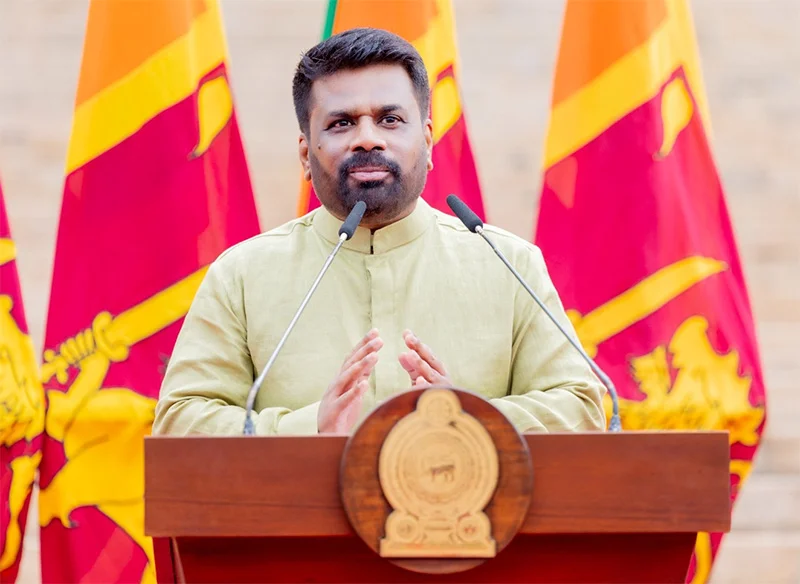
by Upali Gamakumara,
Upali.gamakumara@gmail.com
The Clean Sri Lanka (CSL) is a project for the true renaissance the NPP government launched, the success of which would gain world recognition. It is about more than just cleaning up places. Its broader objectives are to make places attractive and happy for people who visit or use services in the country, focusing more on the services in public institutions and organisations like the SLTB. Unfortunately, these broader objectives are not apparent in its theme, “Clean Sri Lanka,” and therefore there is a misconception that keeping the environment clean is the main focus.
People who realise the said broader objectives are excited about a cleaner Sri Lanka, hoping the President and the government will tackle this, the way they are planning to solve other big problems like the economy and poverty. However, they do not see themselves as part of the solution.
From the management perspective, the CSL has a strategic plan that is not declared in that manner. When looking at the government policies, one can perceive its presence, the vision being “A Prosperous Nation and a Beautiful Life,” the mission “Clean Sri Lanka” and the broader objectives “a disciplined society, effective services, and a cleaner environment.” If the government published these as the strategy, there would have been a better understanding.
Retaining the spirit and expectations and continuing the ‘Clean Sri Lanka’ project is equally important as much as understanding its deep idea. For this, it needs to motivate people, which differs from those motivators that people push to achieve selfish targets. The motivation we need here is to evolve something involuntarily, known as Drivers. Drivers push for the survival of the evolution or development of any entity. We see the absence of apparent Drivers in the CSL project as a weakness that leads to sporadic hiccups and free flow.
Drivers of Evolution
Drivers vary according to the nature of envisaged evolution for progress. However, we suggest that ‘the force that pushes anything to evolve’ would fit all evolutions. Some examples are: ‘Fitting to survival’ was the driver of the evolution of life. Magnetism is a driver for the unprecedented development of physics – young Einstein was driven to enquire about the ‘attraction’ of magnets, eventually making him the greatest scientist of the 20th century.
Leadership is a Driver. It is essential but do not push an evolution continually as they are not sprung within a system involuntarily. This is one of the reasons why CSL has lost the vigour it had at its inception.
CSL is a teamwork. It needs ‘Drives’ for cohesion and to push forward continually, like the Quality Improvement Project of the National Health Service (NHS) in England. Their drivers are outlined differently keeping Aims as their top driver and saying: Aims should be specific and measurable, not merely to “improve” or “reduce,” engage stakeholders to define the aim of the improvement project and a clear aim to identify outcome measures.
So, we think that CSL needs Aims as defined by NHS, built by stakeholder participation to help refine the project for continuous evolution. This approach is similar to Deming’s Cycle for continual improvement. Further, two more important drivers are needed for the CSL project. That is Attitudinal Change and Punishment. We shall discuss these in detail under Psychoactive Environment (pSE) below.
Aside from the above, Competition is another driver in the business world. This helps achieve CSL objectives in the private sector. We can see how this Driver pushes, with the spread of the Supermarket chains, the evolution of small and medium retail shops to supermarket level, and in the private banks and hospitals, achieving broader objectives of CSL; a cleaner environment, disciplined behaviuor, efficient service, and the instillation of ethics.
The readers can now understand the importance of Drivers pushing any project.
Three Types of Entities and Their Drives
We understand, that to do the transformation that CSL expects, we need to identify or adopt the drivers separately to suit the three types of entities we have in the country.
Type I entities are the independent entities that struggle for their existence and force them to adopt drivers involuntarily. They are private sector entities, and their drivers are the commitment of leadership and competition. These drivers spring up involuntarily within the entity.
Type II are the dependent entities. To spring up drivers of these entities commitment of an appointed trustee is a must. Mostly in state-owned entities, categorized as Boards, Authorities, Cooperations, and the like. Their drivers do not spring up within or involuntarily unless the leader initiates. The Government of a country also falls into this type and the emergence of drivers depends on the leader.
Type III entities have neither independent nor dependent immediate leader or trustee. They are mostly the so-called ‘Public’ places like public-toilets, public-playgrounds, and public-beaches. No team can be formed as these places are open to any, like no-man-land. Achieving CSL objectives at these entities depends on the discipline of the public or the users.
Clean Sri Lanka suffers the absence of drivers in the second and third types of entities, as the appointed persons are not trustees but temporary custodians.
The writer proposes a remedy to the last two types of entities based on the theory of pSE explained below.
Psychoactive Environment (pSE) –
The Power of Customer Attraction
Research by the writer introduced the Psychoactive Environment (pSE) concept to explain why some businesses attract more customers than others who provide the same service. Presented at the 5th Global Conference on Business and Economics at Cambridge University in 2006, the study revealed that a “vibe” influences customer attraction. This vibe, termed pSE, depends on Three Distinct Elements, which can either attract or repel customers. A positive pSE makes a business more attractive and welcoming. This concept can help develop Drivers for Type II and III entities.
pSE is not an all-inclusive solution for CSL, but it lays the foundation for building Drivers and motivating entities to keep entrants attractive and contented.
The structure of the pSE
The three distinct Elements are the Occupants, Systems, and Environment responsible for making a pSE attractive to any entity, be it a person, institution, organization, or county. Each of these elements bears three qualities named Captivators. These captivators are, in simple terms, Intelligent, Nice, and Active in their adjective forms.
pSE theorizes that if any element fails to captivate the entrant’s mood by not being Intelligent, Nice, or Active, the pSE becomes negative, repelling the entrant (customer). Conversely, the positive pSE attracts the entrants if the elements are Intelligent, Nice, and Active.
For example, think person who comes to a Government Office for some service. He sees that the employees, service, and environment are intelligent, nice, and active, and he will be delighted and contented. He will not get frustrated or have any deterioration in national productivity.
The Significance of pSE in CSL
The Elements and the Captivators are universal for any entity. Any entity can easily find its path to Evolution or Progress determined by these elements and captivators. The intangible broader objectives can be downsised to manageable targets by pSE. Achievements of these targets make the entrants happy and enhance productivity – the expectation of Clean Sri Lanka (CSL).
From the perspective of pSE, now we can redefine the Clean Sri Lanka project thus:
To make the Elements of every entity in Sri Lanka: intelligent, Nice, and Active.
How Would the pSE be A Remedy for The Sporadic Hiccups?
We have seen two possible reasons for sporadic setbacks and the discontinuity of some projects launched by the CSL. They are:
The absence of involuntary Drivers for evolvement or progress
Poor attitudes and behaviors of people and leaders
Remedy for the Absence of Drivers
Setting up a system to measure customer or beneficiary satisfaction, and setting aims can build Drivers. The East London NHS principles help build the Aims that drive type II & II entities. The system must be designed to ensure continual improvement following the Deming Cycle. This strategy will create Drivers for Type I & II entities.
This process is too long to explain here therefore we refrain from detailing.
Attitudinal Change
The most difficult task is the attitudinal and behavioural change. Yet it cannot be postponed.
Punishment as a strategy
In developed countries, we see that people are much more disciplined than in the developing countries. We in developing countries, give credit to their superior culture, mitigating ours as rudimental. The long experience and looking at this affair from a vantage point, one will understand it is not the absolute truth. Their ruthless wars in the past, rules, and severe punishment are the reasons behind this discipline. For example, anyone who fails to wear a car seatbelt properly will be fined 400 AUD, nearly 80,000 LKR!
The lesson we can learn is, that in Sri Lanka, we need strong laws and strict punishment together with a type of strategic education as follows.
Psychological Approach as a Strategy
The psychological theory of attitude formation can be used successfully if some good programmes can be designed.
All attitude formations start with life experience. Formed wrong or negative attitudes can be reversed or instilled with correct attitudes by exposure to designed life experiences. The programmes have been developed using the concepts of Hoshin Kanri, Brainstorming, Cause-and-Effect analysis, and Teamwork, in addition to London NTS Quality Improvement strategies.
The experience and good responses we received for our pSE programs conducted at several institutions prove and have built confidence in our approach. However, it was a time, when governments or organisations did not pay much attention to cultural change as CSL expects in the country.
Therefore, we believe this is a golden opportunity to take the CSL supported by the pSE concept.
Features
Visually impaired but ready to do it their way
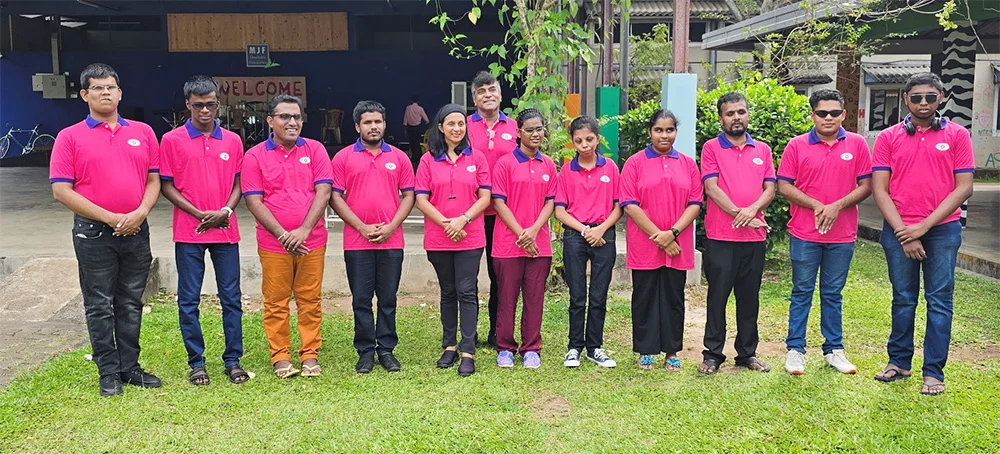
 Although they are visually impaired youngsters, under the guidance of renowned musician Melantha Perera, these talented individuals do shine bright … hence the name Bright Light.
Although they are visually impaired youngsters, under the guidance of renowned musician Melantha Perera, these talented individuals do shine bright … hence the name Bright Light.
Says Melantha: “My primary mission is to nurture their talent and ensure their sustainable growth in music, and I’m thrilled to announce that Bright Light’s first public performance is scheduled for 7th June, 2025. The venue will be the MJF Centre Auditorium in Katubadda, Moratuwa.”
Melantha went on to say that two years of teaching, online, visually impaired youngsters, from various parts of the island, wasn’t an easy ride.
There were many ups and downs but Melantha’s determination has paid off with the forming of Bright Light, and now they are gearing up to go on stage.
According to Melantha, they have come a long way in music.
“For the past few months, we have been meeting, physically, where I guide them to play as a band and now they show a very keen interest as they are getting to the depth of it. They were not exposed to English songs, but I’ve added a few English songs to widen their repertoire.
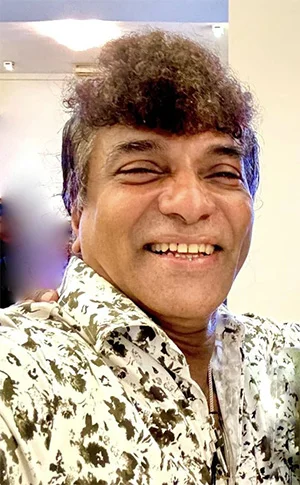
Melantha Perera: Invented a notation
system for the guitar
“On 7th June, we are opening up for the public to come and witness their talents, and I want to take this product island-wide, giving the message that we can do it, and I’m hoping to create a database so there will be a following. Initially, we would like your support by attending the show.”
Melantha says he didn’t know what he was getting into but he had confidence teaching anyone music since he has been in the scene for the past 45 years. He began teaching in 2015,
“When I opened my music school, Riversheen School of Music, the most challenging part of teaching was correcting tone deaf which is the theoretical term for those who can’t pitch a note, and also teaching students to keep timing while they sang and played.”
Melantha has even invented a notation system for the guitar which he has named ‘MelaNota’. He has received copyrights from the USA and ISO from Australia, but is yet to be recognised in Sri Lanka.
During Covid-19, Melantha showcased MelaNota online and then it was officially launched with the late Desmond De Silva playing one of his tunes, using MelaNota.
Melantha says that anyone, including the visually impaired, can play a simple melody on a guitar, within five minutes, using his notation system.
“I’ve completed the system and I’m now finalising the syllabus for the notation system.”
Melantha has written not only for the guitar, but also for drums, keyboards, and wind instruments.
For any queries, or additional information, you could contact Melantha at 071 454 4092 or via email at thebandbrightlight@gmail.com.
-

 Business3 days ago
Business3 days agoSri Lanka’s 1st Culinary Studio opened by The Hungryislander
-

 Sports4 days ago
Sports4 days agoHow Sri Lanka fumbled their Champions Trophy spot
-
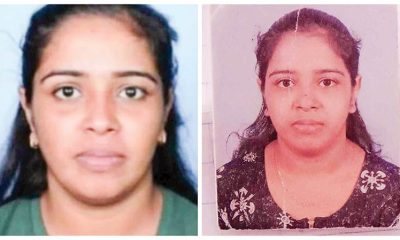
 News6 days ago
News6 days agoKiller made three overseas calls while fleeing
-
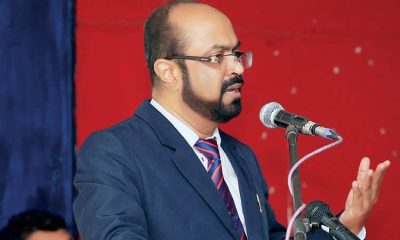
 News5 days ago
News5 days agoSC notices Power Minister and several others over FR petition alleging govt. set to incur loss exceeding Rs 3bn due to irregular tender
-
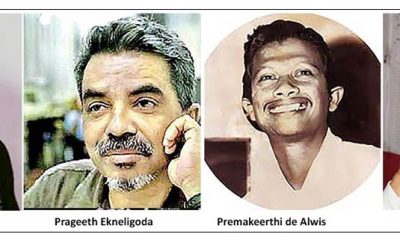
 Features4 days ago
Features4 days agoThe Murder of a Journalist
-
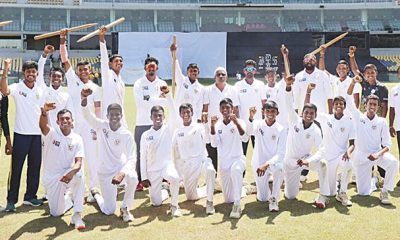
 Sports4 days ago
Sports4 days agoMahinda earn long awaited Tier ‘A’ promotion
-
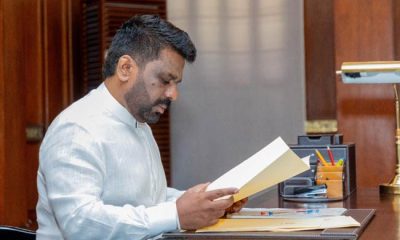
 Features4 days ago
Features4 days agoExcellent Budget by AKD, NPP Inexperience is the Government’s Enemy
-

 News5 days ago
News5 days agoMobile number portability to be introduced in June











